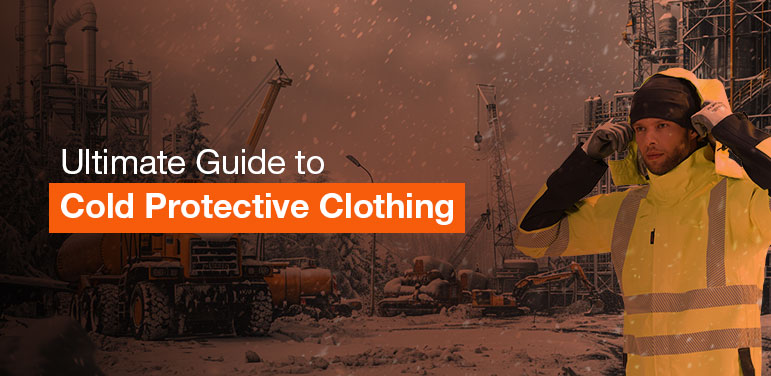When exposed to cold weather, the human body undergoes several physiological changes to maintain its core temperature and adapt to the cold environment. Cooling causes discomfort and impairs physical and mental performance in various ways. Frostbite, hypothermia, and other cold-related injuries can arise from prolonged exposure to cold atmospheric conditions. This can be sudden or develop gradually in too-low temperatures when the applied control measures, such as protective clothing, are inadequate. Cold protective garments with thermal insulation properties help maintain body heat, reducing the risk of such injuries and ensuring worker well-being.
Factors relating to physical work and the environment define how much insulation is needed in cold-protective clothing. Different types of cold environments (wet, dry, windy, etc.) determine which properties of cold protective clothing are needed in specific conditions. The significance of cold protective garments within the realm of flame-retardant clothing lies in their ability to provide comprehensive protection to workers in environments where they face both cold temperatures and potential fire hazards. Cold protective garments in the flame-retardant category offer a unique combination of thermal insulation against cold conditions and resistance to flames and heat. This dual protection is crucial for workers who operate in environments where they may encounter both cold weather and fire-related risks.
The EN ISO 342:2017 standard specifies the requirements and test methods for garments and clothing combinations designed to protect the user in cold environments ranging from chill (-5°C) through to cold storage (-25°C) to deep freeze (-40°C). Examples of the sectors where EN ISO 342 is applicable include Oil platforms, Renewable energy, Industrial laundries, Utilities & subcontractors, etc. The various certification requirements under this standard are as follows-
- Thermal insulation properties (ISO 15831) of the garment (m². K/W), also known as the Clo value. A higher Clo value represents better insulation provided by the garment.
- Air permeability (ISO 9237) which represents breathability of the garment (L/m2/sec). It is reported, generally for the entire assembly of clothing, as ranging from Class 1 (highly permeable to air but not so good for protection against extreme cold) to Class 3 (less permeable to air and better cold protection, but not ideal for comfort). Additional, but optional, testing requirements under EN ISO 342 are listed below. These will be only applicable to clothing systems with a waterproof membrane on the outer layer:
- Water penetration resistance (EN 20811) which determines the waterproofing ability of the garment (Pa). It is measured from the exterior layer, along with all impermeable layers and their seams. There are two levels of classification: Class 1 and Class 2.
- Water vapour resistance RET (EN 31092) indicating the moisture transmission resistance of the garment (m². Pa/W).
As a company committed to the safety and well-being of lifesaver workers, Tarasafe has developed a composite system with three layers each utilizing a different fabric to achieve exceptional thermal insulation. Such a design not only meets ISO 15831 standards for thermal insulation but also aligns with ISO 9237 requirements for air permeability, ensuring that lifesaver workers can perform their duties safely and comfortably.
Careful selection of materials for the outer, middle, and inner layers enables Tarasafe to offer a garment that strikes the optimum balance between warmth and breathability. By providing hazardous industry workers with a garment that exceeds industry benchmarks, Tarasafe empowers them to face cold weather challenges with confidence and peace of mind.
For more information & product details users are encouraged to get in touch with Tarasafe’s marketing team.


Leave a Reply